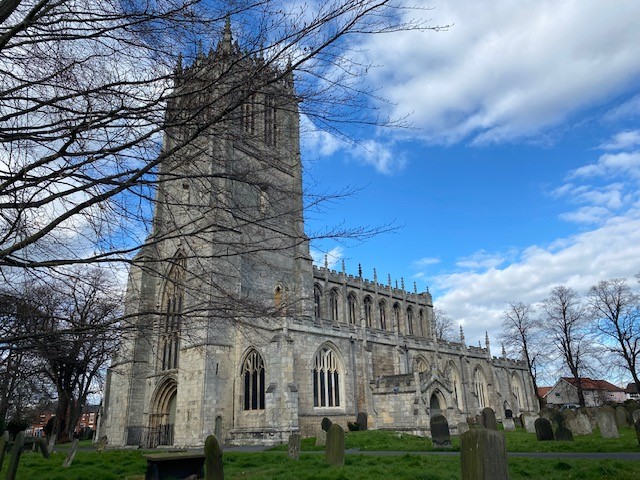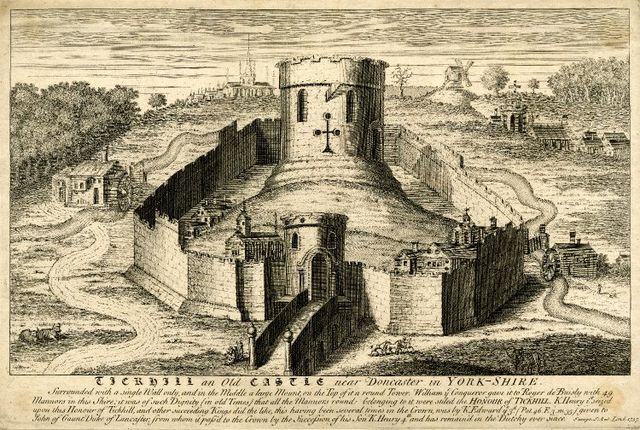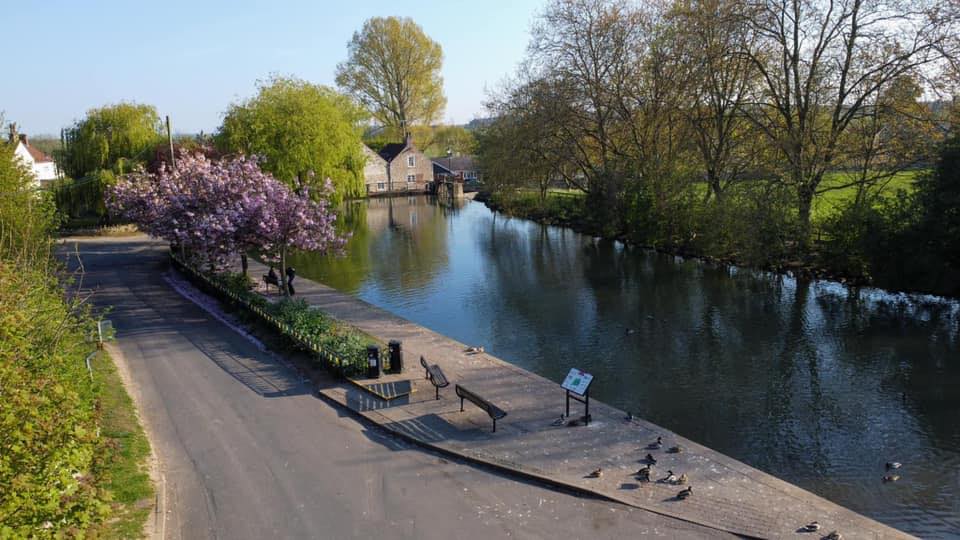During the middle ages, Tickhill was the second most important town after Doncaster in what is now South Yorkshire. The Doomsday Book lists the settlement under the former estate at Dadsley, which now lies on the Northern edge of the town. Dadsley was served by a church situated at All Hallows Hill but by 1361 this had been downgraded to a chapel which was razed by the mid 17th century when it was no longer used following the English Reformation.

Dating from the early 12th Century, St Mary's Church is a grade 1 listed Anglian church, built with local magnesian limestone to replace the disused chapel at Dadsley. Described as one of the finest medieval churches in Yorkshire, Henry I granted the right to present vicars to Tickhill and to have the great tithes of the parish of the Prior of Nostell between 1121 and 1127. In the fourteenth and fifteenth centuries, the church was considerably extended both upwards and outwards. The large west tower is 128 feet (39m) high and has recently undergone extensive restoration, it contains 8 bells, the oldest of which dates back to 1726, a special feature is the carillon installed in 1896 which can ring a different tune every 4 hours.
In the heart of the town, stands The Buttercross. Erected in the Market Place in 1777 in an attempt to revive the weekly market, The Buttercross was where local farmers sold their produce, however the market failed to survive and had ceased by 1800

Built by Roger De Busli,
Tickhill Castle started as an 11th Century Motte-and-Bailey and is one of the oldest remains in the Town. Following a seige in 1102, Robert Bloet added a curtain wall to the rampart around the bailey; the first part of the castle to be built of stone. By the 17th century, the castle had fallen into disuse but was re-fortified by Sir Ralph Hansby for the Royalists in the Civil War, however, it was then razed by Parliament after the defeat of the Royalists in 1648 to prevent its use as a stronghold in the future. The Gatehouse, much of the walls, and imposing mound without any surviving structures remain today. It is now the property of The Duchy of Lancaster and is a private residence open to the public one day of the year. Details of the
next open day will be available once they are announced.
 The Mill Dam, know to many local residents as the duck pond is situated close to the castle. At it's foot is the last of the town's four water mills to survive. The mill building, a grade II listed building, dates back to the 13th century and retains many of it's origional features, including some of the mill workings. Today it is a private residence.
The Mill Dam, know to many local residents as the duck pond is situated close to the castle. At it's foot is the last of the town's four water mills to survive. The mill building, a grade II listed building, dates back to the 13th century and retains many of it's origional features, including some of the mill workings. Today it is a private residence.
The Parish Room - This half-timber fronted building is the last survivor of many monastic institutions in the town. It was once St Leonard's Hospital and is believed to have been a leper hospital. Today it is used as a Parish room and can be hired for private functions.
In the early 18th and 19th centuries, Tickhill was a significant crossing of two turnpike roads, East to West and North to South. The Red Lion was a typical coaching inn, with accommodation for both guests and staff either side of the coach entrance into a bustling yard. Mail coaches between London and Glasgow called twice a week at The Red Lion which remained a public house until the early 1990's. The Red Lion and it's courtyard are now Jamps restaurant and St Mary's shopping precinct.
Over the years Tickhill has had it's fair share of large imposing houses, some of which remain today. Some of the most significant buildings were Tickhill Friary, The Vicarage, Lindrick House, Rock House and Sandrock House. Amongst other interesting houses were Sunderland House and St Leonards.
More about the history of Tickhill, along with many photo's of the town over the years can be found by visiting The Tickhill History Society website.